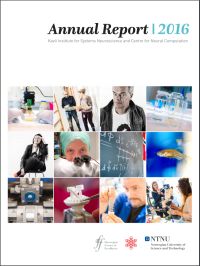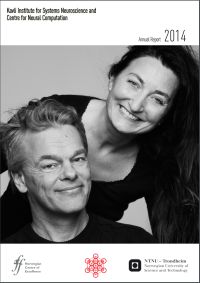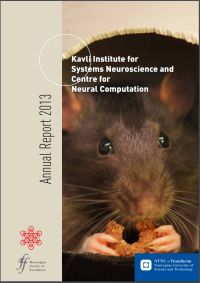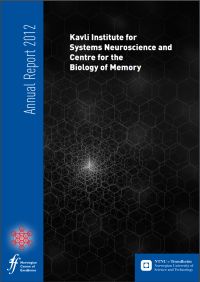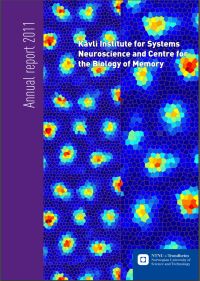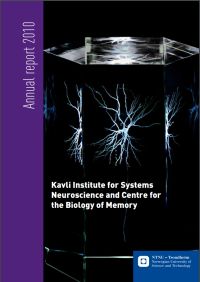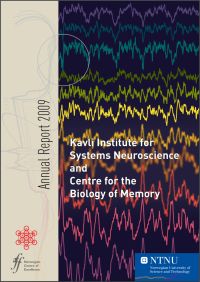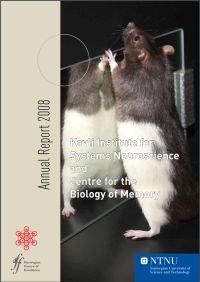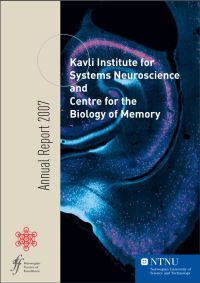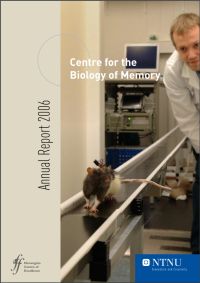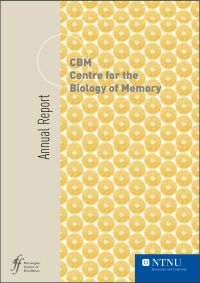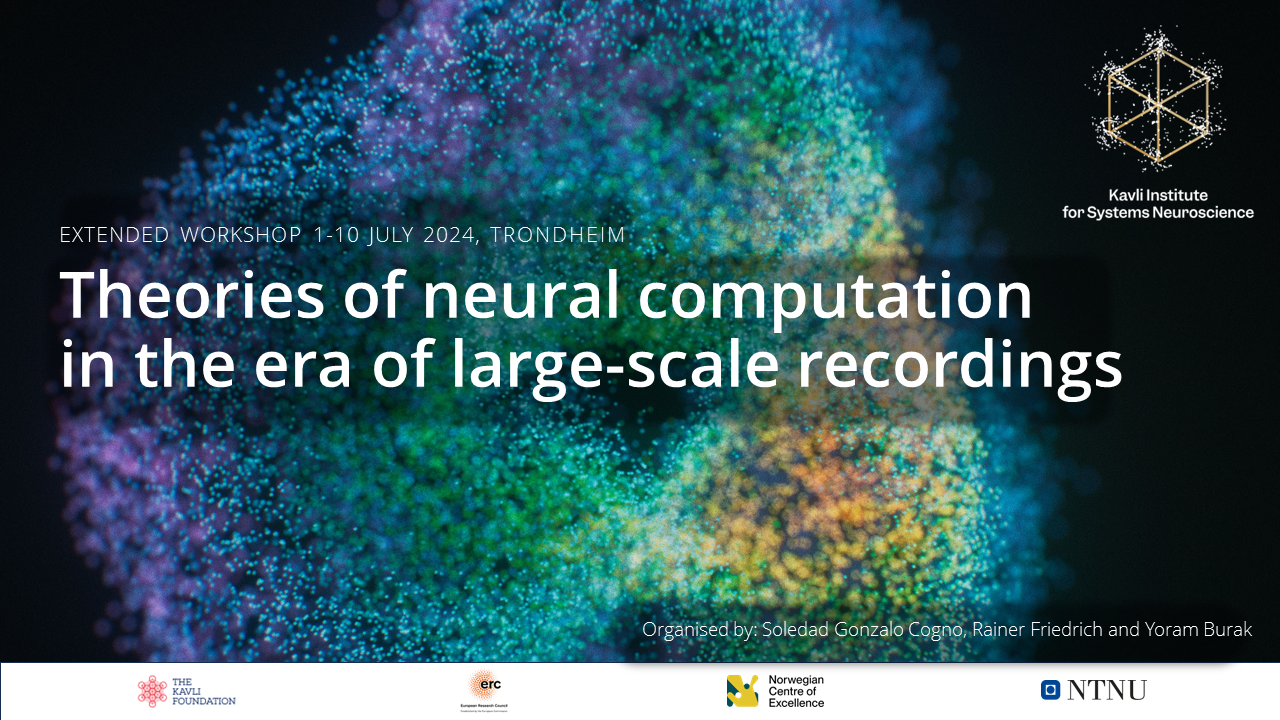Flavio Donato Honored for Uncovering Neuron Circuit Development
Outreach
Brain Science Discoveries at KISN
Say hello to Mini2P - the brain explorer!
Mini2P is an open-source miniature 2-photon microscope brain explorer for fast high-resolution calcium imaging in freely-moving mice.
Get to know Mini2P.
A framework in your brain for organising the order of things

Scientists at NTNU’s Kavli Institute for Systems Neuroscience have discovered a pattern of activity in the brain that serves as a template for building sequential experiences.
A framework in your brain for organising the order of things (Norwegian SciTech News).
Minute-scale oscillatory sequences in medial entorhinal cortex (Nature)
Annual Report
Earlier annual reports
Stories from KISN
Flavio Donato Honored for Uncovering Neuron Circuit Development
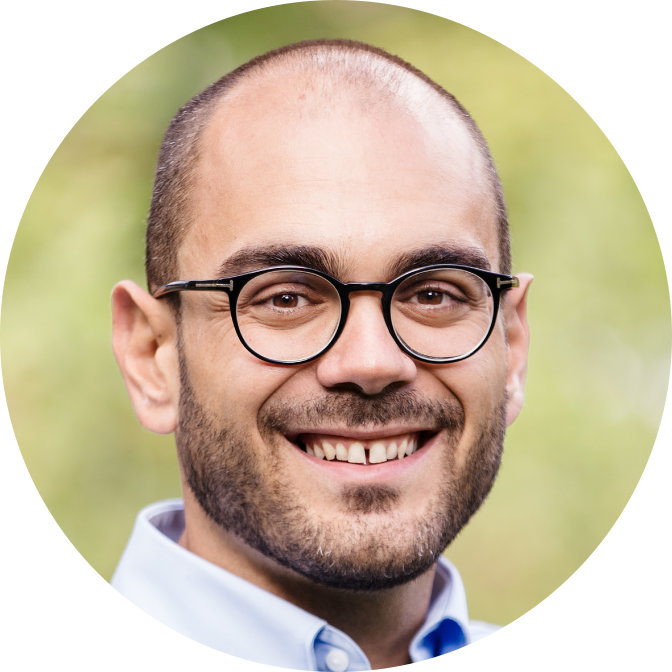
Flavio Donato has been named the 2017 grand prize winner in the annual international competition for The Eppendorf & Science Prize for Neurobiology, for his essay "Assembling the brain from deep within." Dr. Donato's analysis of neuron development offers an entry point into better understanding the organization of the brain, which can help trace back the precise elements of a network that all come together to produce cognition.
 Dr. Flavio Donato named the 2017 grand prize winner in the annual international competition for The Eppendorf & Science Prize for Neurobiology
Dr. Flavio Donato named the 2017 grand prize winner in the annual international competition for The Eppendorf & Science Prize for NeurobiologyFlavio Donato will be recognized at a prize ceremony in conjunction with the Annual Meeting of the Society for Neuroscience. The ceremony will be held at Science/AAAS Headquarters in Washington D.C. on Sunday evening, November 12, 2017. Read Flavio Donato's prize winning essay "Assembling the brain from deep within", published 27 October 2017. Read the popularized press release on Donato, Jacobsen, Moser and Mosers research below.
BECOMING A NAVIGATOR
The short story of how our ability to navigate develops in the brain, featuring a game of Chinese whispers in a vulnerable network, and a clockwork cell dancing to its own beat.
A group of researchers consisting of postdocs Flavio Donato and Irene Jacobsen, and the professors May-Britt and Edvard Moser, recently discovered how neurons in the higher mental cortices organize into a functional circuit. The neural circuits in the entorhinal-hippocampal network of the brain, which enable us to navigate in our environment, was their point of departure.
- If you have a machine and you don’t know what it does or how it does it, you pick it apart, Flavio explains. - Much of what we know in neuroscience is learned by reduction. But the analogy between the machine and the brain ends there. With a machine, you can re-build and make it work again. You cannot do this with the brain. The only time neural circuits are put together, is during development. We study the development to learn how the brain does what it does, he says.
 Flavio Donato (holding mouse) and Edvard Moser.
Flavio Donato (holding mouse) and Edvard Moser.What the researchers found in this developing circuit was a unidirectional cascade of signals where every cell is dependent on input from the cell uphill from them in the developmental hierarchy. Their method of investigation included a pharmacogenetic tool for muting the communication in one selected cell population at a time, followed by specific markers that identify cells according to type and level of maturation. This strategy would be the equivalence of removing one domino piece at a time from a toppling chain in order to see where in the hierarchy that specific piece is located. All cells (or domino pieces) in the cascade below the one that was silenced (or removed), would not mature (or topple).
This raises the question of who is at the top of the chain, the first mover, and who or what moves him? The only cell type that the researchers could not stop from maturing were the stellate cells. This told them that the stellate cells had to be first mover, the ones that underpin the entire activity throughout the rest of the neural circuit. There must be an intrinsic drive to the stellate cell that enables it to march by its own beat regardless of what goes on in its environment.
 Dr. Donato in the lab
Dr. Donato in the labThe processes the group uncovered have never before been recorded in the cortices for higher cognitive functions. Their discovery opens an entirely new research field – the development of functional circuits in the non-sensory cortices. They now have valuable first knowledge about the developmental process. And they know that the cascade through the network resembles the connectivity in the adult brain.
- Some researchers are studying the function, but not the birth and emergence of connections, others study the birth but not the function, Flavio explains. - At KI/CNC we are now able to follow the developmental process from neural birth to function. This is a matter of bridging two parts of a process that really only makes sense if you see it as a whole.
 Neurons in layer 2 of the medial entorhinal cortex (MEC). Yellow labelling indicates newly born neurons (BrdU, a thymidine analogue). Magenta labelling indicates stellate cells (immunodetection of reelin). Cyan labelling indicates pyramidal cells (calbindin). Magenta + cyan labelling in the cell body and yellow spots in the nucleus identifies cohorts of neurons born at the time of BrdU labelling. The picture is an optical slice (z=2µm) acquired with a confocal microscope (Zeiss LSM 880, 40× magnification).
Neurons in layer 2 of the medial entorhinal cortex (MEC). Yellow labelling indicates newly born neurons (BrdU, a thymidine analogue). Magenta labelling indicates stellate cells (immunodetection of reelin). Cyan labelling indicates pyramidal cells (calbindin). Magenta + cyan labelling in the cell body and yellow spots in the nucleus identifies cohorts of neurons born at the time of BrdU labelling. The picture is an optical slice (z=2µm) acquired with a confocal microscope (Zeiss LSM 880, 40× magnification).
____________________
First published February 2017, by Rita Elmkvist Nilsen
Images on Flickr
Please contact for more information or for making an appointment for interview:
Rita Elmkvist Nilsen
Head of Communications
Kavli Institute for Systems Neuroscience/
Centre for Neural Computation/
Egil and Pauline Braathen and Fred Kavli Centre for Cortical Microcircuits
NTNU – Norwegian University of Science and Technology
Ph: (+47) 73 59 18 27
Mob: (+47) 907 68 686
E-mail: rita.elmkvist@ntnu.no
Web: https://www.ntnu.edu/kavli
Events
Events at NTNU, Trondheim 5th of Sept. 2024.
KISN Extended workshop
Take a look at the highlights from this summer's workshop: Theories of neural computation in the era of large-scale recordings, 1-10 July in Trondheim by Soledad Gonzalo Cogno, Rainer Friedrich and Yoram Burak.
Thank you to all our wonderful speakers, poster presenters, attendees, & staff for making this event a great success!
National PhD conference in Neuroscience
This year's NRSN conference at the beautiful Jegtvolden Fjordhotell! Don't miss out on the chance to develop your presentation skills, listen to exciting keynote lectures, network with other neuroscientists, and fun social activities ![]()
![]()
Also open for postdocs and MSc students!
![]() Register now by the 20th of August!
Register now by the 20th of August!
Read more on our website.
Selected media
The scientists at the Kavli Institute take part in various activities for communicating science to the public. The tools of the trade for communicating within the science community, like peer-reviewed journals and conference proceedings, are not good sources of knowledge for the public. Rather it’s through popular media, like online video platforms, television, social media, radio, podcasts, newspapers and magazines, as well as popularized talks and debates taking place in the public, that the majority of citizens gain knowledge and advice about science.
Popular science communication demands a translation of both complexity, language and dissemination form, without compromising central scientific aspects. By explaining scientific relationships in a straight-forward language and contextualizing scientific facts within issues of public interest and concern, our scientists aim at not only translating information and facts into publicly accessible knowledge and understanding, but also at providing a vocabulary that allows the broader public to engage in and join discourses about local and global issues that involve both risks and benefits, and in which every citizen is a stakeholder.
These insights represent the fundament for the institute's public outreach activities and science communication plan.
Starmus represents an innovative approach to boosting public understanding of science, inviting citizens to engage with and participate in scientific discourses, by bringing together the very best of science and art into a weeklong popular science dissemination festival. The festival is pulling thousands of visitors, and is covered by major media houses across the world.
In 2016 Edvard Moser participated in the Starmus festival III held in Tenerife, with a popular science lecture on grid cells. Edvard and May-Britt Moser have since been instrumental in bringing the Starmus initiative to Trondheim (2017).
 Popular speakers at the Starmus III festival in Tenerife (2016). Edvard Moser, sixth from left. Photo credits: Max Alexander
Popular speakers at the Starmus III festival in Tenerife (2016). Edvard Moser, sixth from left. Photo credits: Max Alexander"The Grand Narrative" is an animated story about how we find our way in the environment, and why navigation is essential for life.

Into Whiteness is a story of how your ability to find your way in the environment and to remember your history, arise from activity in neural circuits deep within your brain. It is also the story of what happens when these neurons that underpin memory and navigation start dying in Alzheimer’s disease. Learn more about Into Whiteness
New York Times A Sense of Where You Are
Nature Neuroscience: Brains of Norway
Huffington Post The Incredible True Tale Of “The Queen Of Neuroscience” And Her Nobel Prize
Neurosciencestuff A "light switch" in the brain illuminates neural networks
Science Magazine Beam me up, Ratty
Science news Meet 10 scientists who are making their mark
The Guardian How the brain navigates: science Nobel prize special (podcast, 52:20)
Kavli Institute for Systems Neuroscience A journey into the entorhinal cortex (video, 2:51)
Körber Prize May-Britt and Edvard Moser – Winner of the Körber European Science Prize 2014 (video, 9:29)
Skavlan Medicinpriset Maj-Britt och Edvard Moser hos Skavlan (video)
New York Times A Brain's GPS (video, 6:47)
Edvard Moser's Nobel Lecture Grid Cells and the Entorhinal Map of Space
May-Britt Moser's Nobel Lecture Grid Cells, Place Cells and Memory
Grid cells for Young Minds
Frontiers for Young Minds: Can grid cells help us understand the brain?
SUPPORT THE BRAIN RESEARCH
You are most welcome to support the brain research at the Kavli Institute for Systems Neuroscience led by May-Britt Moser and Edvard Moser.
The Research Fund of the Kavli Institute for Systems Neuroscience has the sole purpose of providing direct financial support for the brain research.




